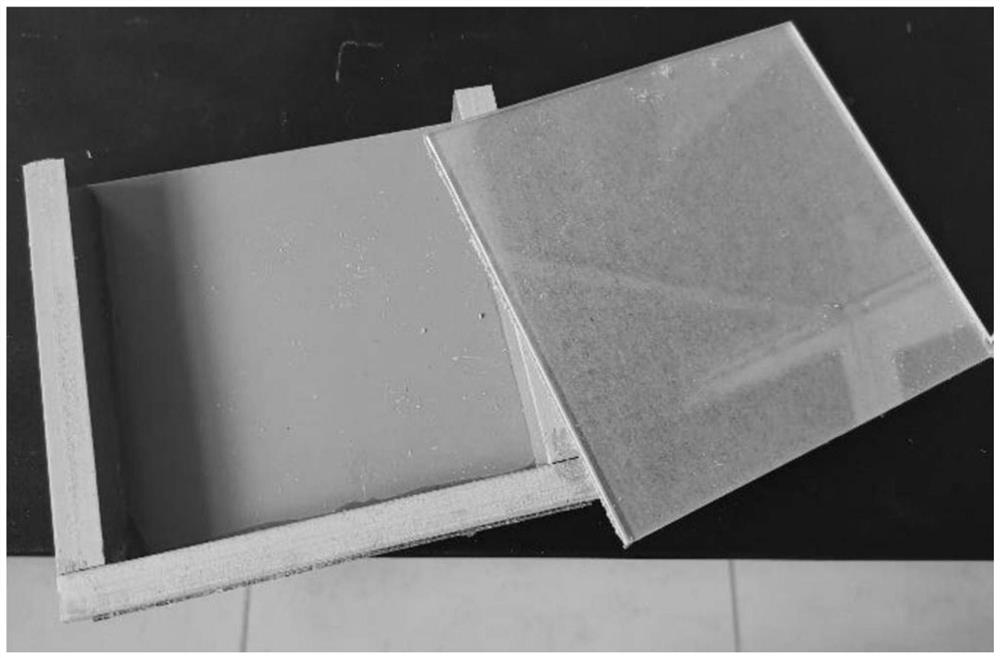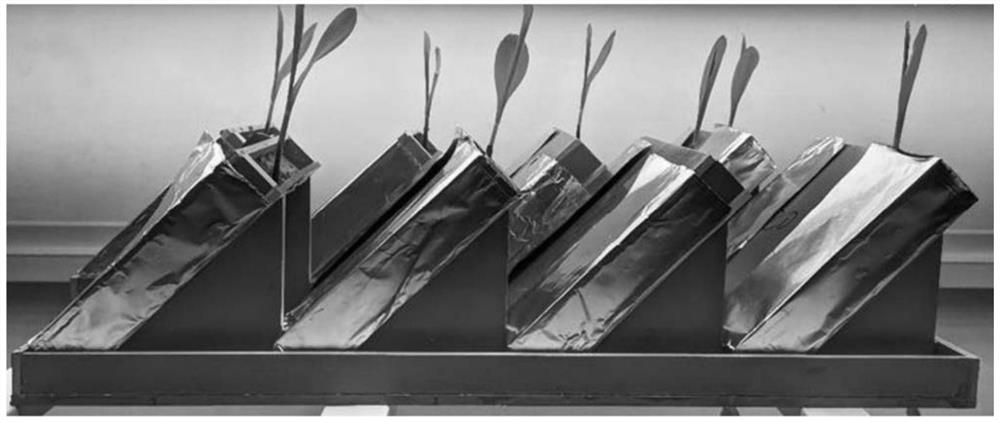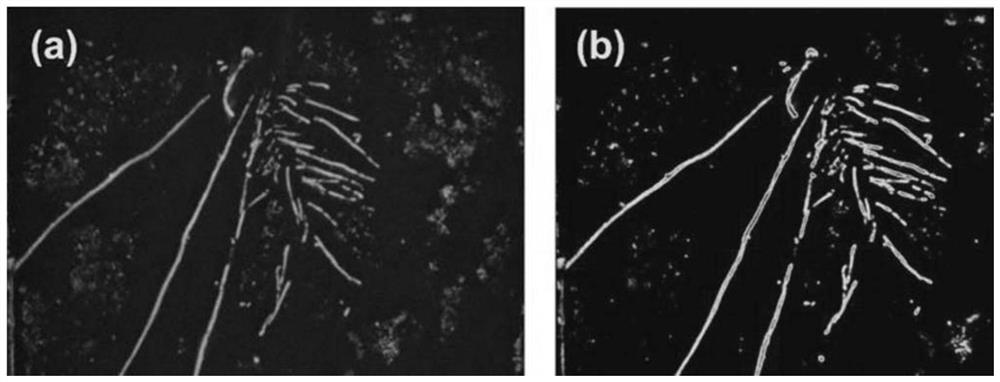Method for simultaneous in-situ determination of enzymatic activity between straw and rhizosphere
A technology of enzyme activity and straw, applied in the field of soil microbiology, can solve the problems of inability to accurately distinguish in situ soil space, overestimation of soil enzyme activity, etc.
- Summary
- Abstract
- Description
- Claims
- Application Information
AI Technical Summary
Problems solved by technology
Method used
Image
Examples
Embodiment 1
[0043] The in situ assay method for enzyme activity in the stalk and rhizosphere under pot conditions comprises the following steps:
[0044] 1. Soil, plants, root box preparation
[0045] Remove stones and plant residues from the air-dried soil taken from the field and pass it through a 2mm sieve for later use. Gramineae crop stalks (wheat in particular) were selected as the research object. After the crops were harvested, the stalks were air-dried and crushed with a grinder, and passed through a 2mm sieve for later use.
[0046] 320 g of soil and 4 g of wheat straw (mass ratio 80:1) were mixed and loaded into custom-made root boxes. The root box is a flat cuboid, and the flat surface on one side can be opened. The movable surface is a transparent surface, which is convenient for observing the growth of the root system in the later stage, such as figure 1 . After mixing the soil and straw into the custom-made root box, wrap the root box with tinfoil and place it obliquely ...
Embodiment 2
[0053] The experimental soil was taken from a multi-year winter wheat-summer soybean model field in March 2019. The retrieved soil was manually removed from stones, plant residues and other impurities, air-dried, ground and passed through a 2mm sieve for later use. The wheat straw harvested in the summer of 2019 was selected as the crop straw. The wheat variety was Jimai 22. After the wheat straw was harvested, impurities such as soil clods were removed and then dried by a dryer. The above soil and wheat straw were all taken from the experimental field of Wuqiao Experimental Station of China Agricultural University. Maize was selected as the test plant, and the maize variety was "Zaohuangnuo". Soak the corn seeds to accelerate germination, and transplant when the root system grows 3cm from the seeds.
[0054] The inner length and width of the root box (potted plant) box used in this research are 12cm, and the inner thickness is 2cm. Take 360g of sieved air-dried soil and pu...
PUM
| Property | Measurement | Unit |
|---|---|---|
| particle diameter | aaaaa | aaaaa |
| thickness | aaaaa | aaaaa |
Abstract
Description
Claims
Application Information
 Login to View More
Login to View More - R&D
- Intellectual Property
- Life Sciences
- Materials
- Tech Scout
- Unparalleled Data Quality
- Higher Quality Content
- 60% Fewer Hallucinations
Browse by: Latest US Patents, China's latest patents, Technical Efficacy Thesaurus, Application Domain, Technology Topic, Popular Technical Reports.
© 2025 PatSnap. All rights reserved.Legal|Privacy policy|Modern Slavery Act Transparency Statement|Sitemap|About US| Contact US: help@patsnap.com



